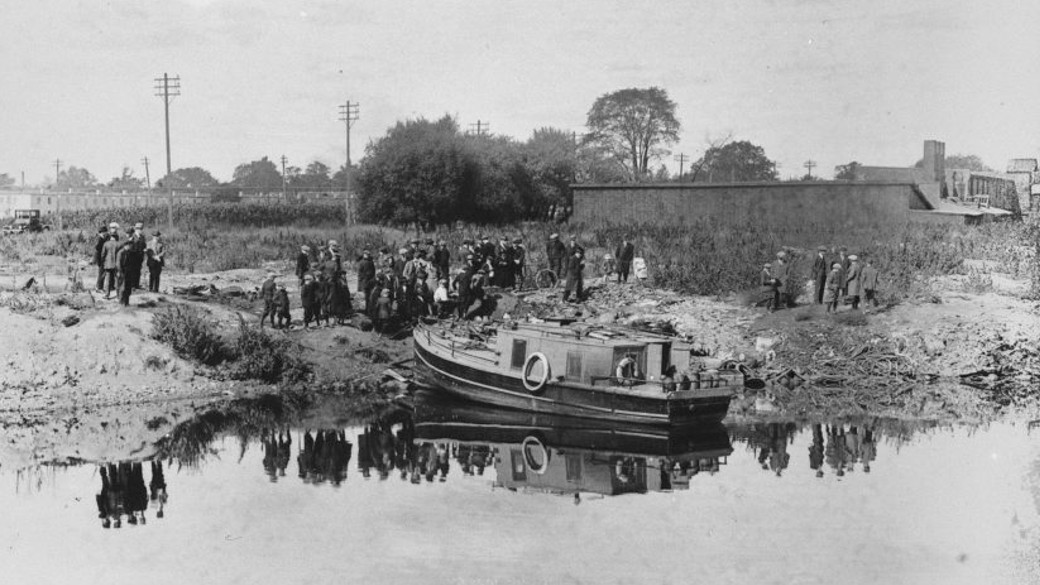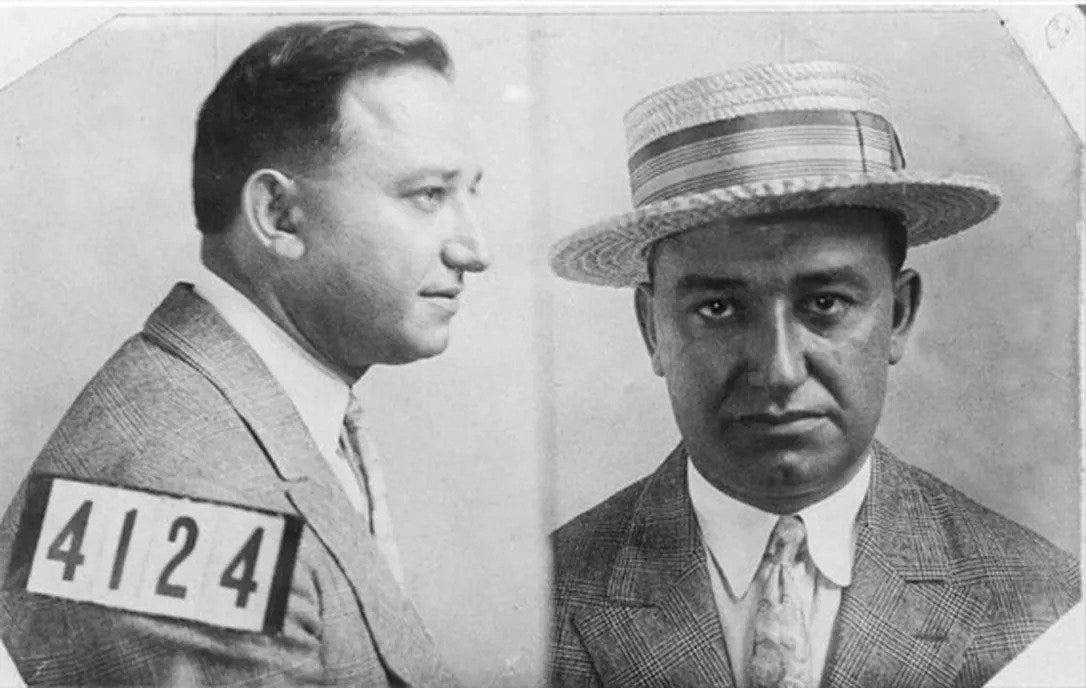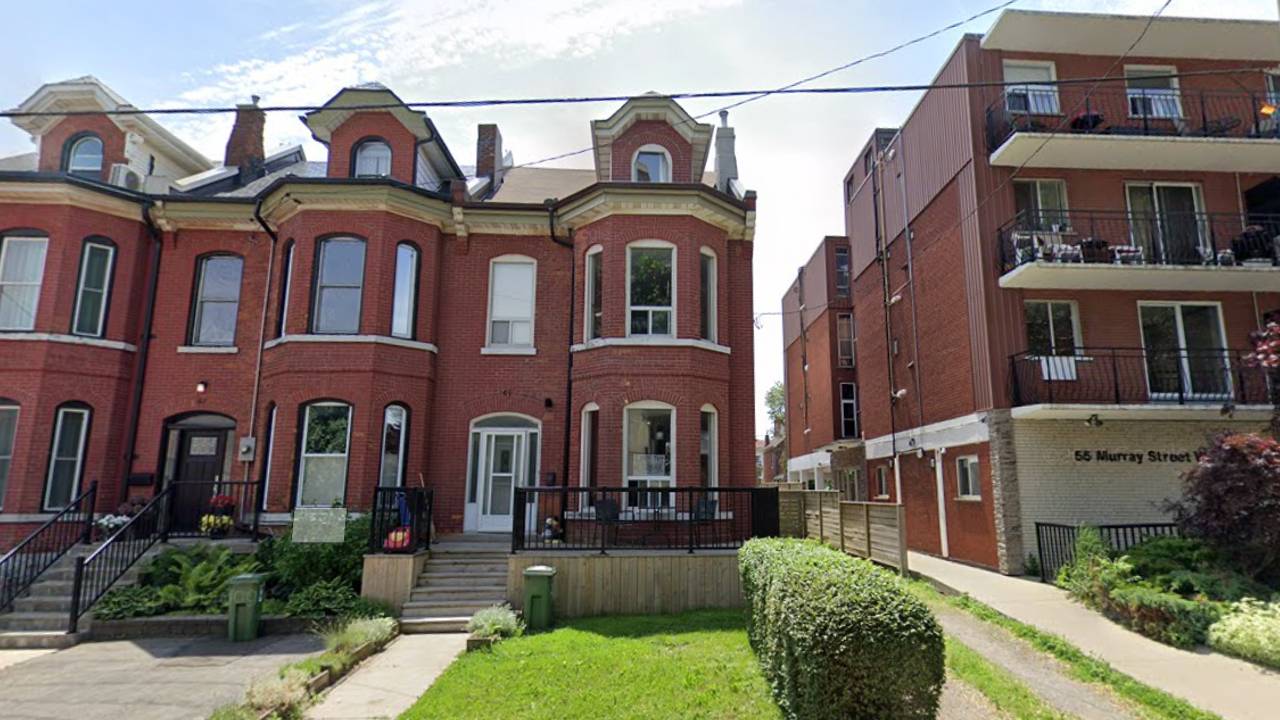The grisly tale of Toronto’s most infamous bootlegger
Once known as the King of the Bootleggers, Rocco Perri disappeared in April 1944, never to be seen again.

One dark October night in 1923, a big tip came in to the Toronto police. It was the height of prohibition and rum-runners had been spotted unloading a boat full of booze on the waterfront. It was the beginning of one of the most dramatic nights in the city’s war on alcohol, ending with a deadly shootout at Ashbridge’s Bay and the arrest of the King of the Bootleggers.
His name was Rocco Perri. He was born in Italy, the son of a goat-herder. But as a teenager, he left home and crossed the Atlantic — just as the 1900s were getting underway. He eventually ended up in Toronto, moving into the city’s most notorious “slum.”
By then, the neighbourhood known as The Ward had been home to generations of new Canadians. It began in the 1850s, with newcomers who escaped slavery on the Underground Railroad. And in the following decades, wave after wave of immigrants moved in, forced to live in increasingly squalid conditions by landlords who were all too willing to take advantage of their tenants. (The Ward would eventually become the city’s first Chinatown before being razed to the ground to make way for City Hall and Nathan Phillips Square.)
It was there, in a world of poverty and slumlords, that Rocco Perri fell in love.
He got work laying streetcar tracks and rented a room from a poor Jewish family on Chestnut Street. Within weeks, he was having an affair with the woman of the house. Bessie Starkman soon left her husband and children to be with him.
By then, Perri had already gotten his start in the underworld. He had ties to the mob and appeared on the witness stand during the infamous murder trial that first brought Italian organized crime into the public consciousness in Toronto. He’d even contracted out an arson while working in a northern mining town.
But it was with Bessie that his career took off. Together, they would build an empire of crime.
They set up shop in Hamilton. Bessie ran their books and a brothel, using the money to buy fur coats and jewels; her jeweller called her “a diamond fiend.” She was known to be ruthless, too — not afraid to strong-arm people into business deals at the point of a gun, or have a pet dog killed to deliver a message.
Rocco was more gregarious, in his pinstripe suits and bright ties, posing as a salesman for the imaginary Superior Macaroni Company as he built relationships and connections across the world of organized crime. His outgoing personality helped him bridge traditional divides, ignoring the old Italian regional rivalries that created so much distrust and unrest.
But behind that friendly exterior, violence lurked.
People around the Perris had a habit of turning up dead. A murder at a New Year’s party. A stabbing. A shooting. A dead cop. Even Rocco’s mistress, Olive Rutledge, died in grisly fashion. He’d married her under a fake name and had two kids with her, but she got sick of being neglected in Bessie’s favour, jumping out the window of her lawyer’s office to her death.
Rocco and Bessie had their fingers in all sorts of illegal pies — and the local police force in their pocket so they could get away with it. But in those early days, it was gambling above that made them the best money, with a network of rackets that reached all the way into Toronto.
As Trevor Cole points out in his excellent book about Perri, The Whisky King, our city was big for bookies. Ernest Hemingway once explained, “For years, Toronto has been known all over the world as the biggest betting town in North America.” He figured there were 10,000 wages placed on horse races in the city every day. And the Perris were getting a cut of a lot of those bets.
Still, it was with the arrival of prohibition that business really took off. The sale of alcohol was banned, but thousands of speakeasies and “blind pigs” (their dive-bar cousins) sprang up across Southern Ontario. They all needed booze. And the Perris became their biggest supplier.
The couple built a fleet of 50 boats that sailed the waters of Lake Ontario, Lake Erie and the Niagara River, smuggling booze across the border. They didn’t even need hardened criminals to captain them. Many rum-runners were ordinary fishermen looking to make a little money on the side, happy to break a law they didn’t believe in. Rocco was so confident in the operation, that he gave interviews to the press.
“I am a bootlegger,” he told the Toronto Daily Star. “I am not ashamed to admit it. And a bootlegger I shall remain.”
His smugglers, he boasted, didn’t even carry guns.
There were even legal loopholes to take advantage of. Ontario had banned the sale of alcohol, but for a long time you could still make booze — for export. Major breweries and distilleries like Gooderham & Worts (the company whose old complex is now the Distillery District) were still very much in business. And the notorious Perris became one of their biggest customers.
Rocco and Bessie would send their men to buy huge amounts of legally made liquor, bribe an official or two, fake some paperwork, load up a boat, and pretend to be shipping the booze across the lake to the United States… then wait for the cover of darkness to bring the booze straight back into Ontario to fuel the speakeasies and blind pigs.
So that’s what they were doing on that bloody October night in 1923.

Bessie ordered more than 2,500 bottles of whisky from a distillery in Belleville. And then she sent four unarmed rum-runners — a young man from Port Dalhousie with his friend, dad and uncle — to go pick up the shipment in their boat and secretly bring it to Toronto.
They slipped into Ashbridge’s Bay around midnight, under a cloudy sky with a only a thin sliver of moon, quietly sneaking up to a deserted patch of shoreline near the foot of Leslie Street. Rocco and his men were there waiting for them with a couple of trucks (REO Speed Wagons, ancestors of the pick-up truck) ready to be loaded up.
That’s when the Toronto police got a telephone call from someone reporting the suspicious activity. Four officers raced down to Ashbridge’s Bay, firing a warning shot into the air as Rocco’s men dove into the bushes — where they were caught and arrested one by one.
The men on the boat, though, were still trying to escape — throwing the engine in reverse and chugging away into the darkness.
The police called out for them to stop: “Shut off your engine or I will sink your boat!”
There was no response…
The police opened fire.
Rocco screamed, “Don’t shoot! There are people on that boat! You could kill them!” The police ignored him. They fired over and over again — at least 15, maybe 30 times. Their bullets couldn’t sink the boat, but they tore through the cabin — and through two of the men on board.
One was hit in the jaw; he’d need emergency surgery at St. Michael’s Hospital.
And his nephew wasn’t so lucky. John Gogo was struck in the chest, the bullet carving its way through his heart and lung. He was dead within 15 minutes.
It was one of the biggest booze busts in Ontario history, but instead of being hailed as a victory in the fight against organized crime, it became a major scandal. Headlines criticized the police for opening fire on defenceless men. An inquiry found the use of force was “without justification.” All four officers were put on trial for manslaughter — only spared after two hung juries couldn’t agree on their guilt or innocence.
And that was far from the deadliest chapter in the story of Rocco and Bessie Perri. As the authorities cracked down with new laws and enforcement, the sources of safe, legal booze dried up. Bootleggers were forced to make their own liquor — moonshine — out of poisonous industrial alcohol.
The government made sure that industrial alcohol was the only alcohol available and that it was deadly to drink thanks to lethal additives. So the Perris hired chemists to filter it, using a perfume shop and tonic factory as a front. But that was an incredibly dangerous game.
In the summer of 1926, a rushed shipment turned deadly. It would prove to be 94 per cent pure wood alcohol — too poisonous even to touch, never mind drink. And as it made its way through underground parties and secret bars, it unleashed horrors.
One victim threw up black vomit. A second turned blue. A third foamed at the mouth with a bloody froth. Some died screaming. One woman wondered aloud why the green leaves outside her window had all turned black; her eyesight was going. Many went blind before passing away. By the time it was all over, 45 people had been killed across Ontario and New York State.
The deaths helped bring an end to prohibition in our province. Within months, the premier was running for re-election on a platform promising to introduce government-run stores under the Liquor Control Board of Ontario: The LCBOs we still have to this day.
With prohibition gone, it wasn’t long before the Perris’ empire began to crumble. The big blow came suddenly and in bloody fashion. When the couple arrived home one night after a game of cards, two assassins were waiting in the shadows. As Bessie got out of the car, they opened fire with their shotguns; the blasts left her dead in the driveway. Tens of thousands of people came to gawk at her funeral.
Rocco carried on for another decade. He even found a new partner. Annie Newman was a platinum blonde with “the cold, blue eyes of a killer,” who’d once lived in The Ward herself. She took over the books and even launched her own gold racket, buying the Metro Theatre on Bloor Street (the building is still there today; it’s a gym in Koreatown) to serve as a front.
She hired miners to smuggle gold flakes out of mines and assayers to mis-weigh gold samples and pocket the difference, melting them down to be smuggled into the United States. It wasn’t until one of her mules was caught at the border into Buffalo wearing a vest filled with gold bars that she was sent off to the Kingston Penitentiary.
As for Rocco, he’d always been able to escape any real repercussions. Even the police had failed to pin anything big on him. He compared them to “a lot of schoolboys learning to play ball.” He just once spent a few months in prison for perjury — and a couple of years in an internment camp for Italian-Canadians during the Second World War. The Canadian government was quick to use the War Measures Act as a way to round up gangsters they’d failed to convict when due process was required.
But by then, Perri was already clearly in someone else’s crosshairs. A bomb blew apart his porch. Another tore through his car; he had to drag himself out of the burning wreckage. And when he was finally released from the internment camp, he discovered that a notorious Buffalo gangster had moved into his territory. The violence was getting worse.
Once hailed as the King of the Bootleggers, Rocco Perri was now back in Toronto, staying with friends, pretending to be a janitor at the movie theatre, trying to piece his empire back together.
And that’s when he disappeared….

It happened during a visit to Hamilton, where he was making plans to move back into the house where he and Bessie had once ruled the Ontario underworld. He told friends he was going for a walk in the rain, slid on his overcoat and his fedora, slipped out the door...
And was never seen again.
Some people think he fled to Mexico where he lived out the rest of his days. But others say he met a grislier end: that he was murdered by hitmen sent by that Buffalo gangster, his body encased in a barrel filled with cement and then dumped into Hamilton Harbour.
Those people say he’s still down there now, the King of the Bootleggers in his watery grave.
This is a cross-post from Adam Bunch’s newsletter, The Toronto History Weekly. Click here to read and subscribe.
Code and markup by Kyle Duncan. ©Torontoverse, 2023